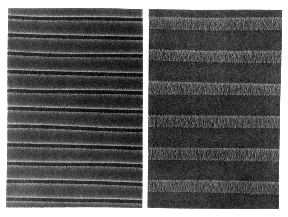Sony has developed a 4X density MD, which realizes a memory capacity
of 650MB through the use of a data media providing small size, large
capacity and excellent portability.
Due to MD's characteristic high sound quality and quick access, the
audio MD market is currently growing, through wider use in applications
ranging from portable use to car audio use. Furthermore, MD data
(memory capacity 140MB), standardized in 1993, has seen increasing use
in areas such as document archiving, using the Sony "Data Eater"
personal MD file, as well as in home and office information
appliances.
The new "4X density MD" realizes a factor of 4.6 increase in memory
capacity to 650MB by pursuing a densification of the current MD data
format. This densification has been achieved using new techniques such
as laser strobe magnetic
modulation technology, high density magnetic film technology, and a
miniaturization of the beam spot by reducing the wavelength of the
record / playback laser and increasing the numerical aperture of the
lens. Through the establishment of this new technology, it has become
possible to freely conduct the recording and playback of still and
motion video images on a compact MD media holding the CD-ROM
equivalent of 650 MB of information.
Henceforth, we plan in the spring of 1997, based on this technology,
to establish a standard together with Sharp Corp., from whom we have
received participation in the development of this technology, and then
call extensively upon other industry firms to adopt this technology.
